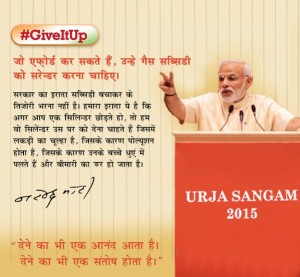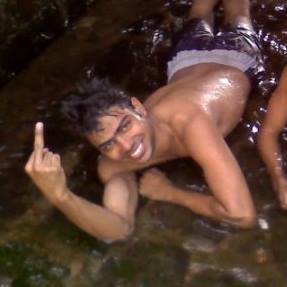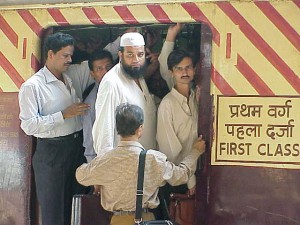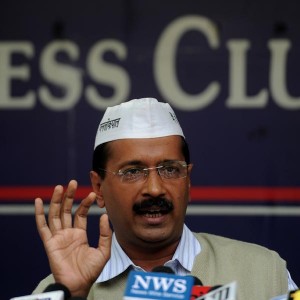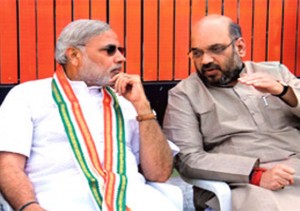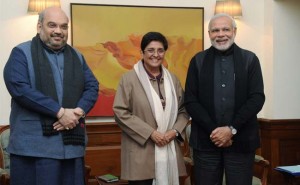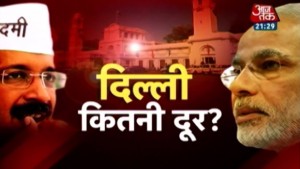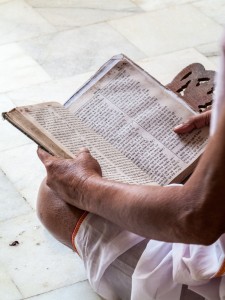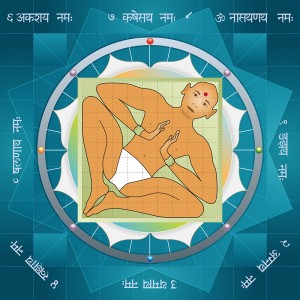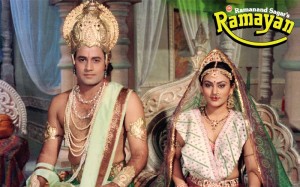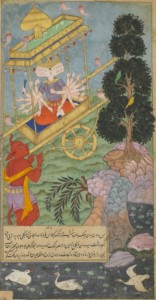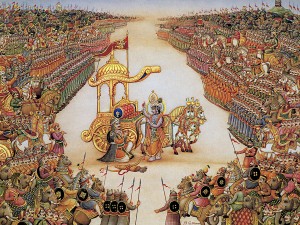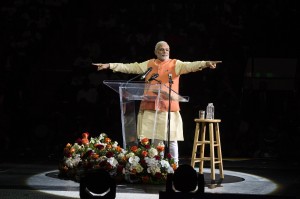It is said that people that are in a tearing hurry, are often people that are terribly mistaken. While, in India we have a set of individuals who like to take immense pride and thump their chest about the vitality and immortality of their culture (read Hindu), there is another set that is virulently trying to debunk everything about it (read Hindutva). In this battle of ego and posturing, truth often gets beaten about. So, at one end you have the proud constituents claiming the superiority of ancient science by referring to tales and stories, the opponents are eagerly taking pot-shots debunking any story or theory. In the hurry to come out with fancy headline that will attract eyeballs, like “Raving Loony Hindutva History“, people tend to debunk everything or anything. To be honest, I really liked the titled, and am sure many would have been enticed to read it just because of it.
And so is the case of another gem of a story that promises to “Rani Padmini and four other Hindutva history myths exploded“. Wherein the author, Girish Shahane, take upon his shoulders the onerous duty of showing the way. He goes on to start with a sort of sermonising stoicism, “BJP’s misreading of history, however, is also underpinned by versions of history that circulate as truth within the mainstream.” And then in reverse chronological order lists five major “myths that have gained mainstream acceptance in India”.
Before I delve deeper into what my fellow journo brother listed, I wish to clarify a few things beforehand. First up, let’s define “myth” (and I know I go through this painful exercise so very often). Now Oxford Dictionary beautifully describes it as: A traditional story, especially one concerning the early history of a people or explaining a natural or social phenomenon, and typically involving supernatural beings or events. Without even venturing into the domain of Joseph Campbell, where he artfully defined myths as “Myths are clues to the spiritual potentialities of the human life”, we can safely conclude that myths are tales, stories and pretty fantastic.
Sadly, many educated (the uneducated can be excused) make the mistake of mixing falsity with myth. According to popular notion, myth means false, whereas actually myth means story (which could or could not be true). Thus, myths cannot be debunked, destroyed, exploded, blasted, thrown, jumped, sat, vomited (speaking of vomiting there is an interesting myth of a branch of Vedanta was revealed through vomiting — read about Taitriya Yajurveda). Myths are stories that have been far and widely accepted, they are not some ugly heirloom that needs to be smashed to smithereens. When you start with that “pehalwan” or wrestler mentality, you are bound to go wrong. Like our friend does, when he talks about myths that have gained mainstream acceptance, I mean, myths are myths because they have widespread acceptance, else they will not be so.
So, just like him I will list out his points, and see if there is any sense that can be made here.
1. The Myth of Rani Padmini
The first one is the beautiful tale of the ever so-very beautiful queen of Chittorgarh, Rani Padmini or Padmavati. The story is pretty simple; she is supposedly a hell-of-a-looker, hearing tales of her beauty, Allauddin Khilji, attacks Chittor and asks her husband to 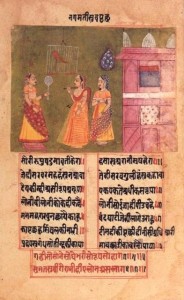 surrender her (as part of harem) as part of settlement. Instead of doing so, the king of Mewar and her husband Ratan Singh makes a suicidal dash against his army, while, the queen and rest of Rajput ladies commit “jauhar” (stepping into fire, rather than risking their honour). The story is gleaned from an epic poem written in 1540 by Malik Muhammad Jayasi. And in a society where honour came before everything, the tale sort of became a sort of an answer to what should be done in similar situations. “Jauhar” or “Sati” was pretty common in Rajput society, and understandably so, considering they always bore the full-frontal attack of any invader making a foray into India. The story of Rani Padmini thus was meant to be an inspiring tale for the rest of the Rajput Princesses or ladies, as to what must be done, in case their husbands lost the battle.
surrender her (as part of harem) as part of settlement. Instead of doing so, the king of Mewar and her husband Ratan Singh makes a suicidal dash against his army, while, the queen and rest of Rajput ladies commit “jauhar” (stepping into fire, rather than risking their honour). The story is gleaned from an epic poem written in 1540 by Malik Muhammad Jayasi. And in a society where honour came before everything, the tale sort of became a sort of an answer to what should be done in similar situations. “Jauhar” or “Sati” was pretty common in Rajput society, and understandably so, considering they always bore the full-frontal attack of any invader making a foray into India. The story of Rani Padmini thus was meant to be an inspiring tale for the rest of the Rajput Princesses or ladies, as to what must be done, in case their husbands lost the battle.
Indeed, as the article points out, there are no real historical records of Rani Padmini, but then, that is pretty common isn’t it. Am sure, if Rani Padmini or even Rani Jodhabai would have known that their existence would be questioned epigraphically by writers centuries later, they would have surely made more efforts to that end. But then, since they did not, let’s not hold it against them. I mean for god’s sake, Christ also had no historicity associated with him, but then don’t we accept him as so.
2. The Myth of Prithviraj Chauhan
Prithviraj Chauhan was a brave and courageous Chandel ruler, in the 11th Century AD. Among his many exploits, the most defining was with Afghani invader Mohammed Ghori. He fought two battles with him, in the first one Ghori was defeated and at Chouhan’s mercy, who rather foolishly let him go. Ghori made good of the second chance, and returned with a much larger force, defeated Chauhan and then had him killed. Now this is history.
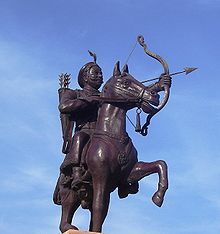 There was a poem composed by Chand Bardai, Prithviraj Raso, wherein the exploits of the king has been vastly exaggerated and he is shown as being blinded by Ghori, and based on a cryptic message from Chand which gives the detail of Ghori (Char bans, chaubis gaj, angul ashta praman, Tau par sultan hai, mat chuko Chauhan), Chauhan let flies an arrow and kills Ghori. Now this is fiction.
There was a poem composed by Chand Bardai, Prithviraj Raso, wherein the exploits of the king has been vastly exaggerated and he is shown as being blinded by Ghori, and based on a cryptic message from Chand which gives the detail of Ghori (Char bans, chaubis gaj, angul ashta praman, Tau par sultan hai, mat chuko Chauhan), Chauhan let flies an arrow and kills Ghori. Now this is fiction.
Sadly, our friend here is unable to distinguish between the two, and blames everyone including Amar Chitra Katha for his ignorance. I mean a person who believes and writes on history based on what he read as a kid in Amar Chitra Katha, must be kidding right? Apparently not.
3. The Myth of a Non-Violent India
The history of India, recorded and accepted, stretches thousands of years back. In all these very many centuries numerous empires came up and vanished, starting from the Maurayas, the Guptas, Cholas, Mughals, Marathas and so on. Yet, in all these years, there was never an invader on the lines of say Alexander or even say Genghis Khan from Indian soil. Yes, the Cholas and Chalukyas expanded their scope of influence in South Asia, but it was rarely of 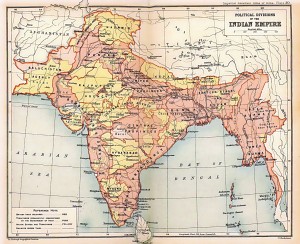 the military type.
the military type.
In fact, when our friend here talks about the invasion of Lanka by “Hindu” kings like Chola, he forgets about the first ever ‘invasion’ of Lanka by an Indian king, way back in 3rd Century BCE, when Ashoka sent his son Mahinda and daughter Sanghamitta down south to propagate the idea of Dhamma. Today, Sri Lanka is a majoritan Buddhist country, because of the seeds that were laid by Ashoka and not anything else.
India had this unique ability to assimilate, so most of those who invaded India got entwined within it, and were subsequently assimilated. So, be it the Greeks (Seleucus Nicator’s daughter was married to Chandragupta Maurya), then came the Islamic invaders, the Mongols, the French, the Portuguese, the British and so on. Each of these were in somehow integrated within the big cultural-melting pot.
The biggest and most successful exports of India have been Buddhism and Yoga, not some swords or gunpowder. Even India’s freedom struggle inspired many countries and leaders; Gandhi was an inspiration from Martin Luther King to Barrack Obama. And am sure when Swami Vivekananda was speaking about a non-violent India, he was referring to such things.
4. The Myth of Sanskrit
While, indeed, the Sanskrit is not really the “mother of all”, but yet, it is certainly not too easy to debunk either. Sir William Jones, who proposed the commonality between Sanskrit and other European Language, did so as a hypothesis. His claim was based on linguistic similarities between Latin, Spanish and Sanskrit; this led him to believe that there was a 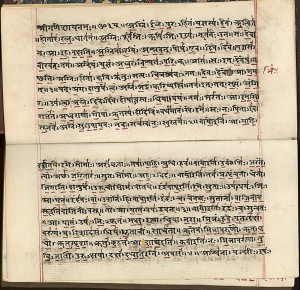 common “proto Indian-European source” to all these languages.
common “proto Indian-European source” to all these languages.
Subsequently, there have been many claims and counter-claims to the same, and the theory has been yet to be conclusively proved. That should not stop us from celebrating the sheer depth and amazing spread of Sanskrit language. Today, the biggest universities across the world are offering courses on Sanskrit, and there are many researchers doing very interesting linguistic study of the same.
And while, we are talking about the antiquity of language, did you know that the written inscriptions found at Indus Valley Sites, called as Harappan Script are not yet deciphered. Now, if and when that is done, it will be a revelation. But then since, there is no real hypothesis to prove there, not many seem to be interested about it.
5. The Myth of a 5,000-year-old civilisation
Among the 5 myths that our friend busted here, this one, without an iota was the most silly and stupid one. But before we delve deeper into the mathematics of this claim, let’s first begin by defining what exactly is “civilisation”. Oxford defines it as, “the stage of human social development and organization which is considered advanced.” The level of development and organisation can be discerned by the level of infrastructure built. Thus, a village with mud huts is not really considered ‘civilised’, while an urban centre is.
Now, when we speak of the past, Indus Valley civilisation is considered to be a hallmark on 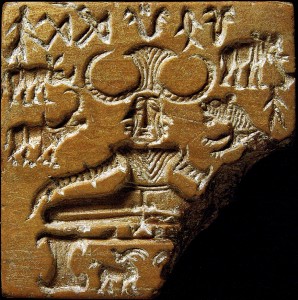 that front. So, dating “civilisation” should be as simple as dating an Indus Valley site. Mehrgarh (in modern day Pakistan) is considered to be one of the oldest ruins of Indus Valley. The date of the Neolithic site has been estimated by archaeologists to be around 6500 BCE. According to Wikipedia page; “It is assumed that early Mehrgarh residents lived in mud brick houses, stored their grain in granaries, fashioned tools with local copper ore, and lined their large basket containers with bitumen. They cultivated six-row barley, einkorn and emmer wheat, jujubes and dates, and herded sheep, goats and cattle. Residents of the later period (5500 BCE to 2600 BCE) put much effort into crafts, including flint knapping, tanning, bead production, and metal working. Mehrgarh is probably the earliest known centre of agriculture in South Asia.”
that front. So, dating “civilisation” should be as simple as dating an Indus Valley site. Mehrgarh (in modern day Pakistan) is considered to be one of the oldest ruins of Indus Valley. The date of the Neolithic site has been estimated by archaeologists to be around 6500 BCE. According to Wikipedia page; “It is assumed that early Mehrgarh residents lived in mud brick houses, stored their grain in granaries, fashioned tools with local copper ore, and lined their large basket containers with bitumen. They cultivated six-row barley, einkorn and emmer wheat, jujubes and dates, and herded sheep, goats and cattle. Residents of the later period (5500 BCE to 2600 BCE) put much effort into crafts, including flint knapping, tanning, bead production, and metal working. Mehrgarh is probably the earliest known centre of agriculture in South Asia.”
This would easily mean that the proof of Indian civilisation stretches as far back as 6500 BCE that would make it, close to 8500 years old. So, the 5000-year-old myth is not really a myth but is actually history.
In the end, the purpose of articles like these is not generate a healthy discussion or encourage deliberation, but to garner hits and eyeballs. If in that pursuit, sanity, rationality and truth has to be sacrificed, then so be it. That really is the travesty of such myth-busters, who know little but claim much. Guess, one must write an article with an interesting title like “Raving Loony Myth Busters” and then possibly they will stop. Or probably not.
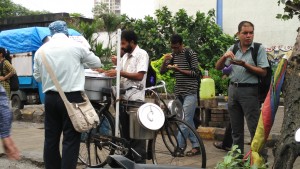 or bad, are all about whether you were able to find a seating place in the train. Chivalries and niceties are easily dumped, when you need to jump a queue and duck into a share auto, even before the lady, who has been patiently standing there for well over 10 minutes. Thus, mornings in Mumbai are chaos supreme, with blood pressures soaring and people zipping from one point to another.
or bad, are all about whether you were able to find a seating place in the train. Chivalries and niceties are easily dumped, when you need to jump a queue and duck into a share auto, even before the lady, who has been patiently standing there for well over 10 minutes. Thus, mornings in Mumbai are chaos supreme, with blood pressures soaring and people zipping from one point to another. with their meduvadas and idlis (at times even plain dosa). Quickly consumable and awesomely cheap, these Breakfast Annas are an essential part of Mumbai life. People waiting for a bus or a rickshaw, will quickly converge at these anna-spots and savour the goodies. For 10 bucks a plate, you can wallop down 3 small meduwadas or idlis and continue on. These annas are like small pit-stops for the people to come and charge self before rejoining the rush to work.
with their meduvadas and idlis (at times even plain dosa). Quickly consumable and awesomely cheap, these Breakfast Annas are an essential part of Mumbai life. People waiting for a bus or a rickshaw, will quickly converge at these anna-spots and savour the goodies. For 10 bucks a plate, you can wallop down 3 small meduwadas or idlis and continue on. These annas are like small pit-stops for the people to come and charge self before rejoining the rush to work.
 convey to me, when I asked him to explain the “logic”, the “meaning”, of his artworks. “Why can’t you accept and enjoy the abstract for what they are, without trying to place them in a context?” Gaja asked me, though it seemed more like an advice or a complain.
convey to me, when I asked him to explain the “logic”, the “meaning”, of his artworks. “Why can’t you accept and enjoy the abstract for what they are, without trying to place them in a context?” Gaja asked me, though it seemed more like an advice or a complain.